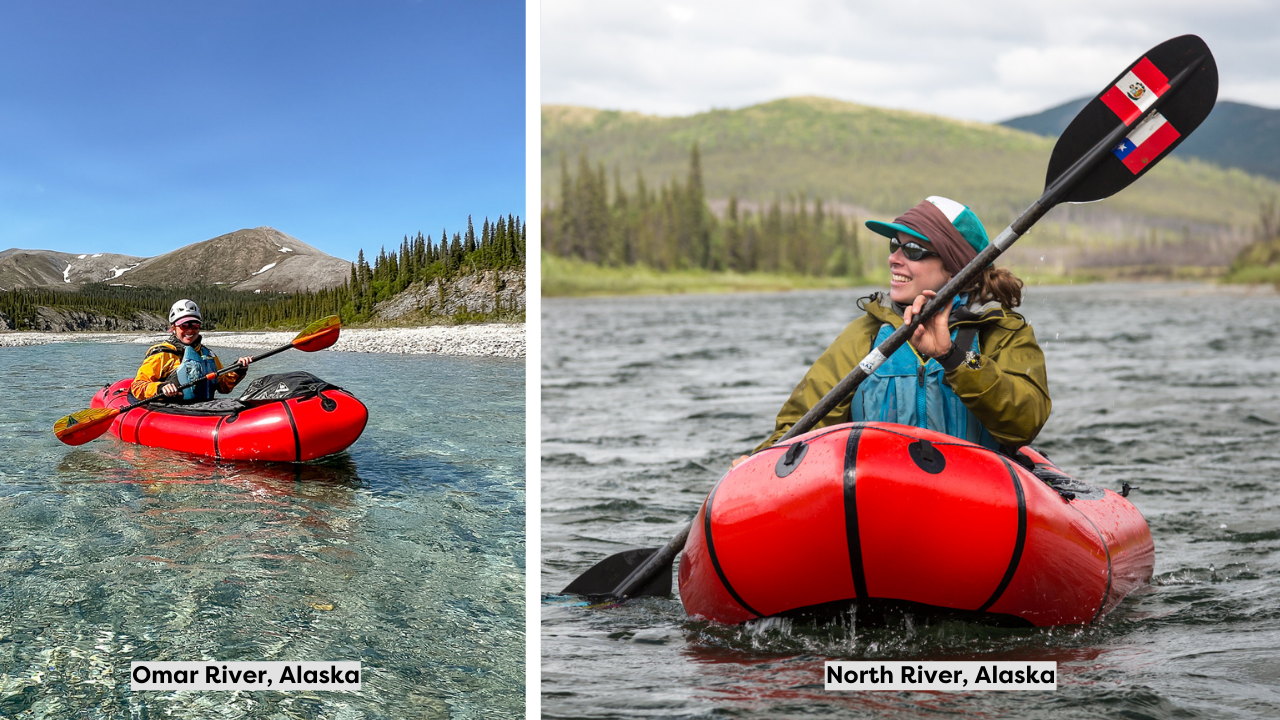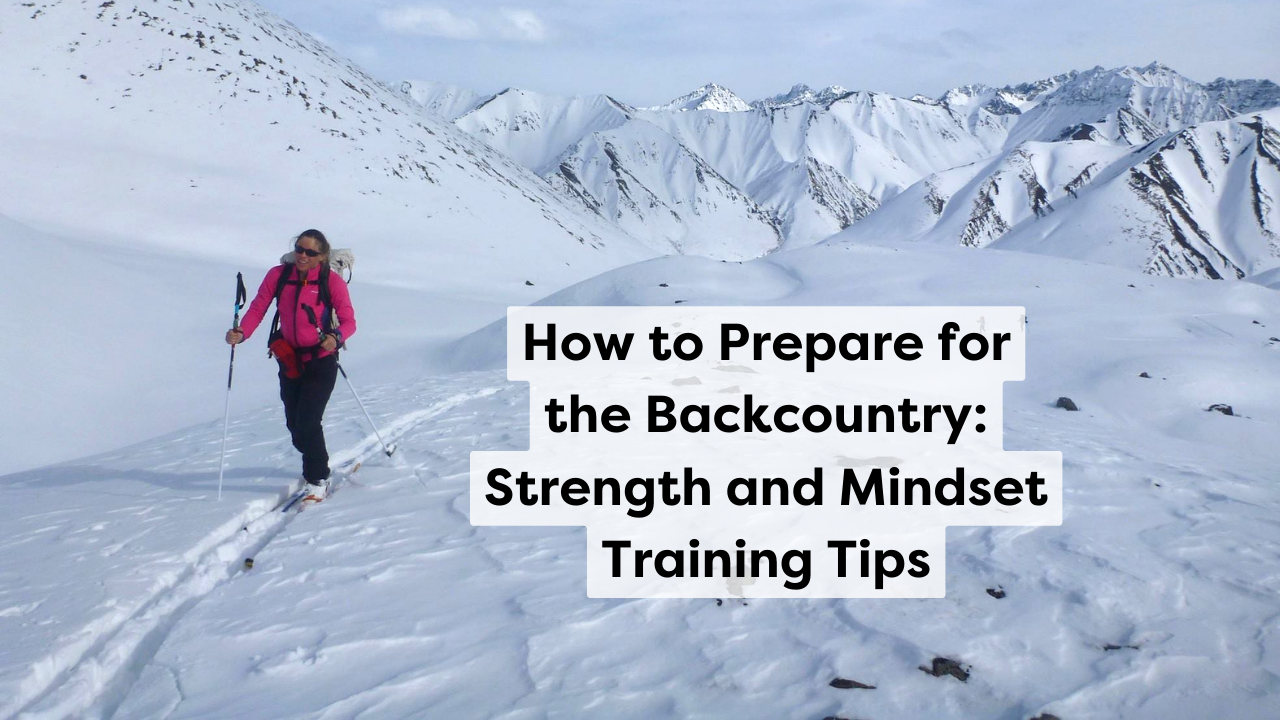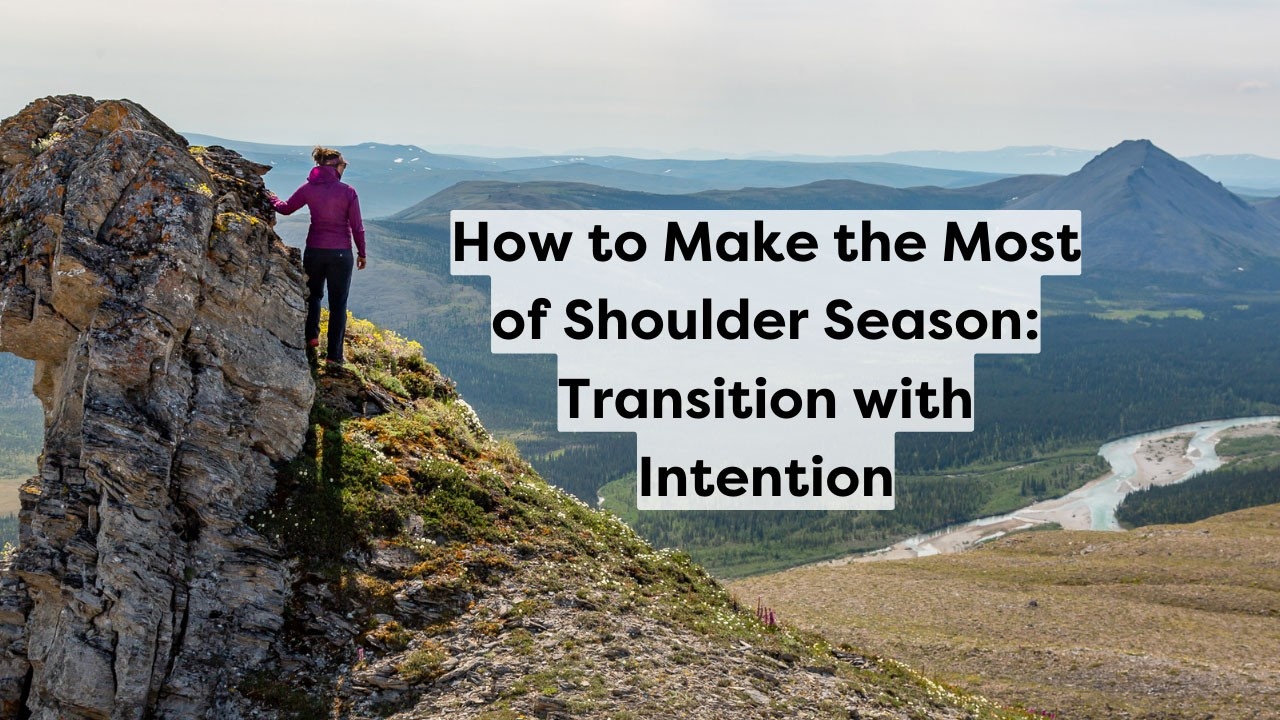Brooks Range Part Two: Rivers, Ridges, and Nervous System Rhythms

I’m back with Part Two of my Brooks Range 2025 summer trip! If you missed it, you can catch Part One right here.
Nothing Like Training in Action
When I think back on this summer’s trip, one of the things I’m struck by is how much the first half of the journey set me up perfectly for what came next. With a foundation of prep work – through Summer Strong, weightlifting with Allison Tenny’s Alpha program, and as much spring hiking as I could squeeze in (we had an early spring melt and good hiking earlier than usual) – I had set myself up for success. Last summer, I was sick most of the season with walking pneumonia and lost a lot of fitness & lung capacity, so I had been motivated to get as much as possible back this season! Luckily, it seemed to be working.
The structure of the trip itself helped, too. In the first half of the trip, we used a basecamp at the airstrip to allow us to do an initial short hiking loop, only three days with light packs. Then we returned to the airstrip a...
How to Train with Your Menstrual Cycle (and other cycles, too!)

Have you ever been curious about how your menstrual cycle affects your training?
Have you ever tried to sync your workouts with your period?
Let’s talk about it! The relationship between periods and fitness as well as the general impact of the different phases of our period have been receiving some much-deserved attention on social media lately. People who menstruate know firsthand just how much hormonal cycles can affect how we feel. So it makes tons of sense that periods also affect how we exercise!
This blog is an exploration of the topics that my upcoming course, Train with Your Cycle, will cover in depth. We’ll be diving into the nuances of all the cycles: nervous system, menstrual, moon, creative, seasonal, grief, etc with the goal of learning how to understand and support the nuances of your particular cycles.
Different phases of our menstrual cycles can yield dramatically different outcomes and feelings depending on what our body is feeling naturally prepared to handle.
T...
Podcast: Cross-Training for Skiers and Aging Gracefully

Cross-Training for Skiing, Channeling Healthy Aggression, and Women-Centered Spaces Outdoors
I recently sat down with Jen Gurecki of Coalition Snow for a juicy chat (hah!) on the Juicy Bits podcast for an episode we called Wisdom & Wellness. We covered so much ground, from learning to ski as an adult, to aging gracefully, to cross-training for winter sports, and lots more.
Jen is a winter superfan and the CEO of Coalition Snow. Over at Coalition Snow, they sell winter sports gear and other merch, plus lead group outdoor trips. Jen and her team have created a fantastic niche in the skiing and snowboarding community, and I’m happy to have an ongoing relationship with them. Jen has even joined us for Ski Babes workouts!
One of the topics we loved most is unpacking the norm and pressure in skier culture for skiers to go as hard as possible and constantly push themselves physically. We poked at why we don’t subscribe to that mentality, and the importance of joy and mental health in redef...
Packrafting Strength: 5 Moves for Better Adventures

Get Packrafting-Ready with These Functional Moves for a Strong Summer
Are you ready for an exciting season of packrafting? Whether you’re just getting into the sport or a seasoned veteran, building strength before your first trip is a great way to make the most of packrafting season. Practicing functional movements at home can build muscle memory in the pre-season, jump-starting your packrafting season for strong technique all summer long.
I’ve been packrafting Alaska rivers for years, and I’m also a fitness trainer. I’m excited to share these exercises that I know from personal experience will help you when you’re out on the water this summer.


Strength-Building Moves for Packrafting
First, a story: in the summer of 2018, my husband Luc & I were in the habit of doing a set of pushups every day. Then we left for a 10-day packrafting trip that started with 60 miles (97km) on the Yukon River. We knew that the Yukon moves at about six miles per hour (10 km/hr) and expected to be on i...
How to Prepare for the Backcountry: Strength and Mindset Training Tips

Tuning up our bodies & minds for the season
Winter is here and many of us are spending as much time as we can playing in the snow and the mountains! As we move through this winter season, let’s talk about how to tune up our bodies and minds for the season, too. Taking good care of yourself isn’t just something to practice in everyday life. We can bring self-care into the mountains too.
Taking time for cross-training both before and during the season can make your days on the mountain so much more enjoyable! Training helps us prevent injuries, keep up with our friends, and have more fun outside. But it can be hard to know how to adequately prepare for winter sports - especially for the backcountry. In this post, we’ll walk you through some simple exercises and mindset tips to practice.
We hope you use these moves and concepts to build your mind & body strength for this winter season!
Training for Strong Winter Bodies
Let’s start with some simple moves you can do in your living roo...
How to Practice Self Care: Winter Wilderness Adventures

Self Care for the Winter Season
Taking good care of your body and mind is important in both everyday life and our outdoor lifestyles. Self care is an especially important concept for winter, when sometimes our mood and energy level can drop. So what does that look like? Here are four tools for wilderness lovers to practice self care this winter.
Tool #1: Using Titration to Grow without Overwhelm
Titration is one of our most important nervous system concepts here at Mind & Mountain. It’s originally a term from chemistry, but when applied to the nervous system it means adding challenge slowly, in small, and manageable doses. Picture adding liquid one drop at a time into a beaker: that’s titration.
Like a chemical reaction overheating or bubbling over, doing too much too fast can flood our nervous systems. When our brain gets flooded, it literally changes how it functions: the rational part of our brains shut down while our fear and survival zones kick into high gear. This is great fo...
Three Exercises for Backcountry Skiers: Training for a Strong Winter

Why exercise at home for stronger ski days?
Winter is here and it’s time to hit the slopes! As we get our winter gear out, it’s important to think about how to tune up our minds & bodies for the season, too.
One of the best things you can do to stay strong and injury free this winter is to prep with a little strength training. Doing some exercises at home, even in small doses, is a really effective way of staying healthy on your skis. Nothing ruins ski season like being sidelined with an injury!
On top of that, practicing functional movements at home can build the muscle memory to help your technique come together early in the season. By building your endurance and practicing healthy movement patterns in pre-season, you can jump start your season and ski strong all winter long.
Three strength moves for backcountry skiers
We’re going to take you through three moves we love for building strength for ski season. Each of these movements imitates an action that we use in the backcountr...
How to Make the Most of Shoulder Season: Transition with Intention

What Is Shoulder Season?
Shoulder season is a key time of year for any outdoor adventurer. It’s that in-between time when it’s not quite good weather for summer activities like hiking, but not cold and snowy enough for winter sports like skiing, either. When we say “shoulder season”, we’re not talking about training our arm muscles! What we actually mean is the transitional seasons between the big seasons of summer and winter, like spring and fall. (Wondering where the term comes from? Us too. Here are some theories.)
Depending on the climate where you live, the exact timing of your shoulder season might look a little bit different from others. The most important thing to remember is that it’s a time of transition. It’s the time when you’re switching focus. We all experience transitions differently. So, tune into your body and take a moment to reflect on when these yearly transitions happen for you and how they make you feel.
When thinking about our training, shoulder season doesn’...
How to Choose a Route for Your First Backpacking Trip

Let's find you the best route for your first backpacking trip
Whether you’re dreaming of days in the mountains, along coastlines, or through the desert, planning your first backpacking trip is an exciting process. Congratulations on making moves toward this rewarding new hobby! To make your experience as positive and fun as possible, it’s important to find a beginner-friendly backpacking route that suits your experience level.
Here are some tips for finding the best route for your first backpacking trip.
Where to Find Ideas for Beginner-Friendly Backpacking Routes
When looking for ideas for your first backpacking trip, where should you start? Good news: there are lots of great resources to identify beginner-friendly routes. As you’re researching, try to find information about the same route from multiple sources. If you find broad agreement across several sources about a route, you can feel more confident in that information.
Outdoor stores
Pop into a local gear shop and ask an a...
Backpacking for Beginners: Training for Your First Trip

Why is Strength Training Important for Backpacking?
Many adventurers go into backpacking trips with the mentality that they will “use the trip to build fitness.” While a trip will certainly help make you stronger, striking out on a big adventure with no foundation of training can easily lead to getting in over your head or hurting yourself. Not the best way to have a good time!
While simply doing more hiking can help us build our trail fitness, it’s important to remember that hiking isn’t the whole story. By training our bodies as holistic systems and reinforcing healthy, functional movement patterns, we can be stronger hikers.

Strength training before and between our outdoor adventures helps us build the resilience we need for injury-free outings. When we’re not derailed by pain or struggling to keep up, we can have more fun and focus on enjoying things like the beauty of our surroundings and the great company of our trip companions. As we build strength, it also enables us to ta...
